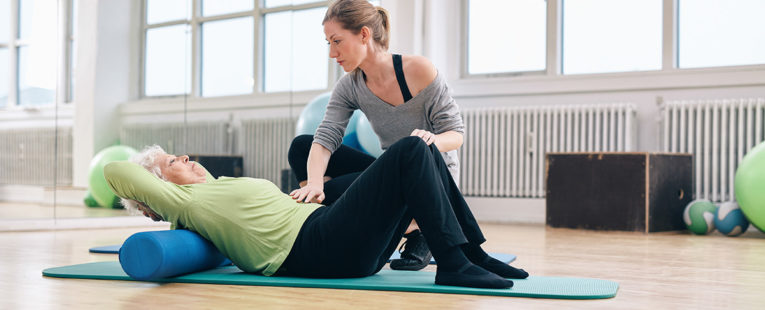More than 11 million men, women and children suffer from some form of pelvic floor problem such asurinary incontinence,constipation, prolapse,pelvic pain or discomfort, or postpartum changes.
The good news is many cases of pelvic floor problems can be treated successfully.
What is the pelvic floor?
The pelvic floor consists of three layers of muscle across the pelvic outlet — the area widest from front to back of the pelvis and that lies between — that support the organs against gravity. These muscles are active during coughing, laughing, sneezing, lifting and stabilization of the body’s trunk during physical activity such as strong movements of the arms and legs.
The pelvic muscles may become overactive or underactive for a variety of reasons throughout a person’s lifetime. Problems may then occur affecting the function of the bladder causing unintentional loss of urine (incontinence), high frequency of bladder emptying, difficulty with fully emptying the bladder leading to urinary tract infections, leakage, or frequent urination. Bowel problems may include constipation, leakage, or prolapse. Uterine problems may include pain or prolapse.
Pelvic floor dysfunction may also cause abdominal, back, hip, or pelvic pain.Pelvic floor therapyaddresses the role of these muscles as well as other physical and lifestyle factors that may contribute to the problems.
Pelvic floor conditions
Urinary incontinence:25 to 45% of the population have episodes of incontinence (unintentional loss of urine) with rates increasing with age. Although urinary leakage may be common, it is never considered normal. Some people react to episodes of incontinence by decreasing social interactions with family and friends.
Constipation:慢性便秘是不经常排便或大便困难,持续数周或更长时间。便秘通常被描述为每周排便少于3次。虽然偶尔的便秘很常见,但有些人会经历慢性便秘,这可能会影响他们的日常工作能力。慢性便秘也可能导致排便过度紧张和其他体征和症状。
Prolapse:Pelvic organ prolapse is the bulging of a body part, such as the rectum or vagina, which commonly occurs because of weakened supportive tissues around the organs. Prolapse may cause discomfort with sitting, lifting and sexual function. It may interfere with bladder emptying and bowel movements.
Pelvic pain or discomfort:Pelvic pain arises from muscle or other soft tissue imbalances in the pelvic floor. Physical therapy will address these imbalances. Through a detailed assessment and partnership with a therapist, treatment can bring positive results. Several factors can contribute to pelvic pain, including (but not limited to):
- Pelvic inflammatory disease (PID)
- Endometriosis
- Pelvic congestion syndrome(PCS)
- Interstitial cystitis
- Bacterial vaginosis
- Pelvic floor tension myalgia
- Ovarian cysts
- Vulvodynia
- Postpartum changes – Pregnancy and delivery can cause changes in a woman’s posture, muscle length and strength. These changes may contribute to pain, discomfort, or incontinence, as well as difficulty with returning to full daily function.
Treating pelvic floor issues
AtOSF HealthCarewe have specially trained pelvic rehabilitation specialists who can help determine the factors contributing to your symptoms. They will work with you to create a treatment plan.
Treatment plans may include the following:
- EMG(electromyography) – a process that allows an individual to monitor the ability to contract or relax a muscle
- Bladder training – learning to control the need to urinate with techniques such as distraction and timed voiding
- Exercises for the pelvic floor muscles that support the bladder (for example, Kegels – the repeated tightening and releasing the pelvic muscles)
- 触发点和肌筋膜释放技术可能包括内部工作
- Diet modifications
- Lifestyle changes
- Breathing and relaxation techniques
- Keeping a bladder diary to increase awareness of patterns and habits
Attending therapy

You would undergo physical therapy according to your customized treatment plan. Usually, formal physical therapy continues for two to six sessions. A home program of exercises and lifestyle modification to achieve the best outcomes efficiently goes hand-in-hand with formal physical therapy.
The goal of therapy is to make weak muscles strong and overactive muscles relax. Pain reduction may be a relevant goal. Therapy hopes to reduce incontinence episodes and achieve normal frequency of trips to the bathroom.
Ultimately, depending on your specific needs, we want to improve function so you can perform all the activities you would like to do without distraction from symptoms.
If you’re having pain and discomfort, speak to a member of your care team about how you could benefit frompelvic floor therapywith an OSF HealthCare physical therapist.
